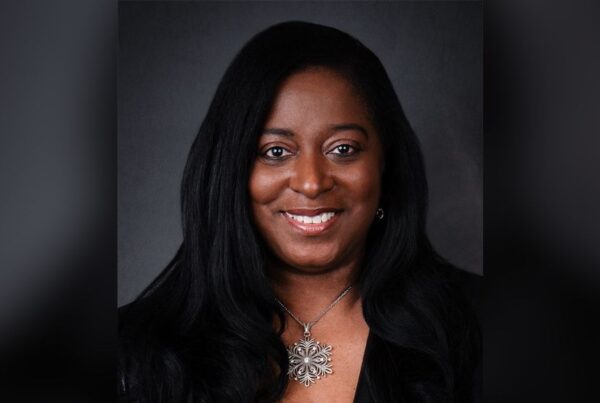
Earlier today, Scarrett revealed that Woodgate & Clark has restructured to fully integrate Quadra into its operations as the combined business faces into what promises to be a “volatile market” in 2023. Following the merger, all Quadra’s staff have transferred across and he now heads up a four-strong C-suite including Quadra’s Dave Greenwood (director) and Simon Jones (client services director), as well as operations director Graeme Fitzpatrick.
Getting the timing right for an insurance merger
Speaking with Insurance Business, Scarrett identified why the time was right for the merger – noting that the move followed two years of Woodgate & Clark getting to know the business, its team, its customers and the work it does to support those customers. With that in place, he said, the collaboration seemed a natural next step, offering opportunities to scale up Quadra’s expertise while further cementing the Woodgate & Clark service proposition and brand.
“This ‘best of both worlds’ move has resulted in a change for both legacy parts of the business in that each of them had quite a flat structure before as they were relatively smaller businesses,” he said. “But as we gain scale, it’s necessary to have a little bit more structure in terms of leadership and governance and support.”
What does Woodgate & Clark’s restructure look like?
The combined firm has restructured to set up three regions of operations, he said, each with a director running them and looking after customer delivery at the front end and making sure there’s the right level of ‘pastoral care’ to support loss adjusters and maintain strong market relationships. Those regional operations are a new element of Woodgate & Clark’s operational structure as are the four technical directorships the business is creating.
“So, while part of the team is out there looking at how we are delivering service on a day-to-day basis, others are looking at what we’re doing in property, for instance, or how we’re making sure our proposition continues to evolve to meet and exceed the expectations of our clients,” he said.
“They’re looking at how we are going to deliver the right technical training, how our loss adjusters are coping… and they’re making sure that we’ve got that technical supervision going on as well as our regional operations supervision. We’re taking a real matrix approach so somebody’s focusing on [each of our areas of specialism] all the time.”
Leveraging new career development opportunities
Among the advantages of the merger, critical to Scarrett and his newly formed C-suite are the implications the move has for the career development of the team and the succession planning of the merged business. Career development has long been a key area of focus for the MD and he’s excited about the new progression opportunities now available to his team.
“Having this wider talent pool, all under the remit of one employer makes it a lot easier for people to now manage their careers within Woodgate & Clark whereas before people may have considered leaving one company to join the other, with all the complexity that brings,” he said. “[Also] our new scale gives us the ability to invest in central services to support our employee progression.
“We’ve invested in our HR team providing training and development, coaching, and mentoring. And we’re factoring that activity into our resource plan so that people don’t have to try and squeeze this into their spare time, rather it’s part of our core employee proposition.”
Crucial to Woodgate & Clark’s employee proposition is its commitment to giving the team interesting work to do, Scarrett said, with the loss adjuster tending to focus on more complex losses rather than high-volume, relatively low-value claims work. For those professionals looking to learn their trade and increase their experience in complex loss-adjusting – the firm is the right place to be.
“Lossing adjusting is a profession where you can learn so much in the classroom and you can learn so much from qualifications but really, the loss adjuster of the future will learn a lot of his or her experience from on-the-job training and attending larger losses,” he said. “So, we’re also working with the Chartered Institute of Loss Adjusters (CILA) to support the work they’re doing looking at resource planning for the future.”
Preparing for volatile market conditions in 2023
In addition to the career development advantages of the merger, the decision will also have significant advantages for Woodgate & Clark’s partners and clients, given the streamlined compliance of the combined firms. And facing into a period of market volatility, this reorganisation is critical to the firm’s ability to navigate the market challenges on the near horizon.
Volatility comes in different guises, Scarrett noted, with some challenges representing brief periods of volatility while others remain in play for longer. Looking at the subsidence claims of last year, and the deep freeze and sudden thaw before Christmas, he highlighted how the loss adjusting world is no stranger to moments of surge. While that spike in activity thankfully calmed relatively quickly, he expects to see more surge activity before the spring arrives.
“So, we’ve got to expect more surge activity coming through, but then you overlay that with the logjams and bottlenecks in the supply chain, particularly for building and construction materials,” he said. “And it’s not just materials, actually, but the actual people who fit them and repair them as well because getting the tradesmen as well as the materials can be quite a challenge.”
These challenges in turn are overlaid with the industry’s collective responsibilities around sustainability, Scarrett said, with insurers setting out ESG agendas mapping out their journeys to carbon net zero. Woodgate & Clark has its own agenda around what that journey will look like and he sees the importance attributed to these initiatives only increasing as the year unfolds. Firms must be on the front foot, which is why the team is so actively identifying and engaging with opportunities to support and lead sustainable initiatives including sustainable repairs and recycling.
With the restructure complete, Scarrett and his team feel more confident than ever when looking to the future and he highlighted how the success of the merger has contributed to that positivity. From the beginning, the merger needed to be a collaborative process, he said, with both legacy communities understanding the critical role they get to play in the new organisation. Feedback from colleagues has been very positive so far, in large part due to the consultative approach taken throughout the process.
“It felt like the right time for all of us,” he said. “It’s a New Year and a new start, and timed with the second anniversary, it all really came together… And while some mergers are predicated on cost-savings, ours was always about how we get the best of both worlds and grow even further. And the commitment that nobody would lose their job as a result of this merger was made right back when we announced this internally in November.”
What’s next for Woodgate & Clark
Looking to the year ahead, Scarrett noted that the emphasis is on the newly restructured Woodgate & Clark doing what it does best – supporting its clients and partners, continuing its work around training and education, and steadily growing the business.
“We’re still growing, so we’re keen to recruit,” he said. “It’s all really about making sure the service delivery is there so that we are supporting the insurers in what they need to do while gearing ourselves up for the future by investing where we need to in ESG, counter fraud and other areas like that. And also, if the right opportunity came along, maybe making further investments where we find other businesses that we feel will fit our model.”
What are your thoughts on this merger? Please feel free to share your comments below.




